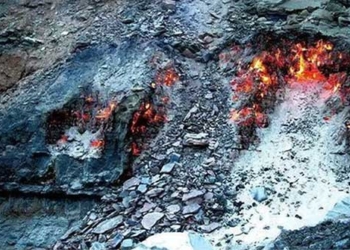From the ancient Roman roads to the unique Moai statue paths, and the routes built by ancient peoples to demonstrate power, each of these paths holds astonishing truths.
Top 9 Oldest Roads on Earth
- Ancient Roman Road in the Venice Lagoon
- The Road of Pontius Pilate – the one who ordered the crucifixion of Jesus Christ
- Easter Island Road
- The Road to Stonehenge (United Kingdom)
- Ancient Roman Roads
- The White Road – A masterpiece on par with the Maya pyramids
- The Tomb Road
- The Jordan Trail Mentioned in the Bible
- The Legendary Silk Road
Ancient Roman Road in the Venice Lagoon
In 2021, archaeologists discovered an ancient Roman road at the bottom of the lagoon in Venice, Italy. This discovery was not surprising, as the ancient Romans were highly skilled in road construction. However, it confirmed previous suspicions. In the 1980s, a group of divers found a basalt stone, which the Romans commonly used to pave road surfaces.

A corner of Venice. (Photo: Shutterstock).
With a length of about 1,200 meters, these ruins may have existed for hundreds of years before Venice was established in the 5th century.
The ancient road connects to other Roman architectural structures such as defensive towers, private living areas, pathways, and ports. From this, scientists confirmed that there was once an ancient settlement in this area.
The road demonstrated that ancient Roman architects did not shy away from constructing paths in challenging terrains. Research indicated that the road was built on a beach, which required excellent engineering skills.
The Road of Pontius Pilate – the one who ordered the crucifixion of Jesus Christ
While excavating an ancient street in Jerusalem, archaeologists discovered several coins beneath the road. From the date inscribed on the coins, it can be determined that the 220-meter-long road was built during Pontius Pilate’s tenure as Roman governor. As the ruler of the region, this road was likely constructed under his directives.
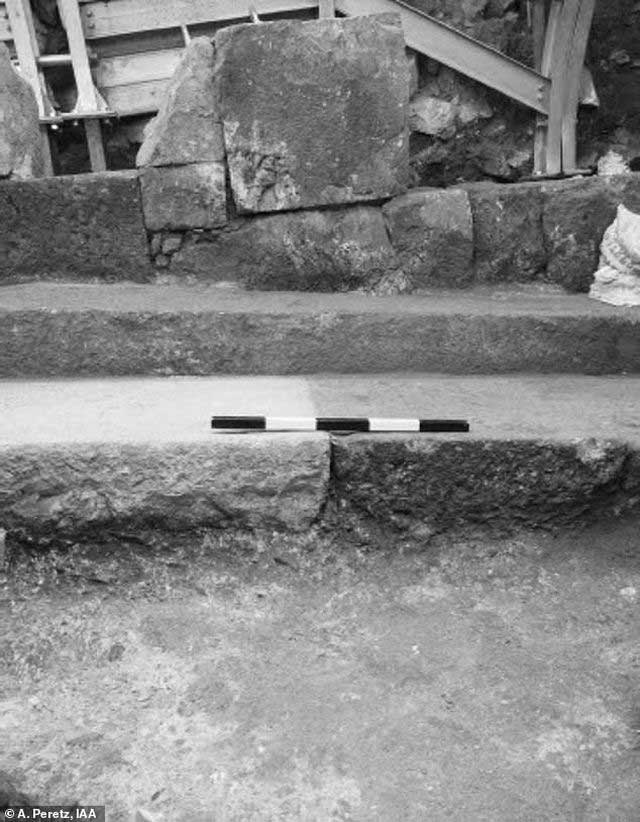
The road is approximately 2,000 years old. (Photo: Independent).
According to experts, the road is about 8 meters wide and was built around 2,000 years ago. This was a place where pilgrims stopped to drink water and bathe on their way to the Temple Mount in Jerusalem. The Temple Mount is the holiest site for Jews, thus attracting numerous pilgrims each year.
It is unclear why a Roman governor would invest such resources into a lavish road for local residents. However, considering that the Romans had forcibly occupied Jerusalem, the sacred road could have been a gesture to appease the Jewish inhabitants of the city.
Easter Island Road
Easter Island is famous for its mysterious statues known as “Moai.” In addition, the island harbors another mystery – an 800-year-old ancient road. This road runs across the island, connecting quarries and statues as well as coastal areas. Lining both sides of the road are dozens of statues also referred to as moai.
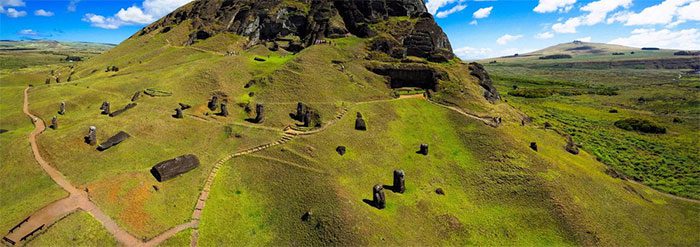
Moai statues standing along the road network. (Photo: Thousandwonders).
Field research conducted by researchers from University College London (UCL) and the University of Manchester shows that the ancient road system of this remote Pacific island was primarily ceremonial in nature and not constructed for transporting the Moai statues.
This discovery may spark controversy among many archaeologists who have spent years trying to understand exactly how the Moai statues were moved.
Previously, in 1958, Norwegian explorer Thor Heyerdahl first proposed the hypothesis that the roads were created solely for moving the Moai statues from the quarry (where they were carved) to their final locations. He noted that those Moai lying face up and face down near the road were abandoned by the ancient Polynesians during the transportation process.
To counter Heyerdahl’s claims, the research team from the University of Manchester and UCL stated that the statues merely fell from their platforms over time. Using specialized surveying equipment, they discovered stone bases associated with each toppled Moai.
Dr. Sue Hamilton from UCL stated: “All evidence clearly indicates that these roads were ceremonial. This aligns with the hypothesis of British archaeologist Katherine Routledge from nearly 100 years ago. The Moai statues face toward the volcano. The closer to the volcano, the more statues appear. This illustrates an increasing level of solemnity in the ceremony.”
The Road to Stonehenge (United Kingdom)
Stonehenge is located on the Salisbury Plain in Amesbury, about 13 km north of the Salisbury area in Wiltshire, United Kingdom.
Many visitors have come to Stonehenge, walking straight without paying attention to the road beneath their feet. This is because it has not been frequently mentioned and is currently covered by grass, so people often overlook it.
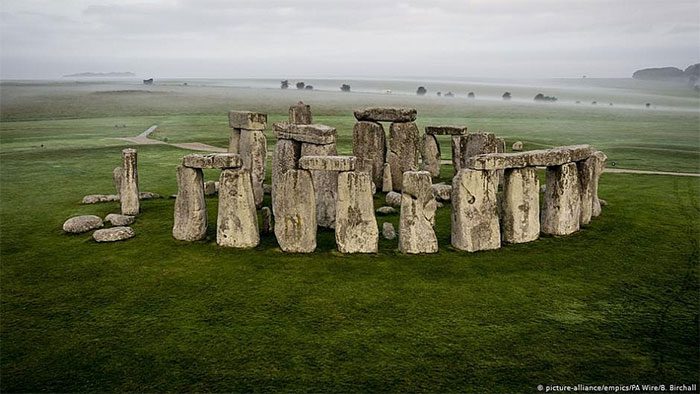
The ancient stone site of Stonehenge. (Photo: PA).
However, recently, while dismantling a modern road running near Stonehenge, archaeologists discovered two ditches believed to be remnants of an ancient road known as the avenue. Archaeologists had known about the avenue and suspected it led directly to the monument, but the modern road had bisected the old one. It is highly likely that this road was constructed by those who built the Stonehenge stones. Currently, no one can say for certain where the road leads.
In 2021, researchers dismantled the new road and uncovered many new features, revealing more about this ancient earthwork. The avenue is approximately 30 meters wide and indeed leads to Stonehenge – this section runs straight for about 0.5 km. From there, the road winds for 2.4 km to the River Avon near the village of Amesbury.
Ancient Roman Roads
About 2,000 years ago, the Romans built famous roadworks. The purpose of constructing a network of roads was to facilitate quicker troop movements, shortening travel time between locations.
Over time, roads began to be built to connect important towns and cities.
Economist Ola Olsson from the University of Gothenburg in Sweden stated: “Although many roads have disappeared and been replaced by new ones, the Roman roads contributed to the concentration of cities and economic activities along them.”
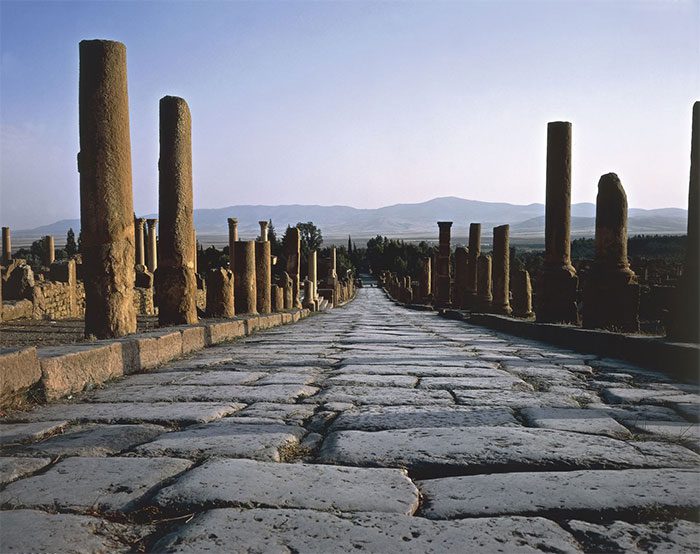
The durable, long roads built on complex terrains reflect the techniques and intellect of ancient Romans. (Photo: Wearethemighty).
Subsequently, the Roman Empire disappeared along with many of its roads. Centuries passed, and many believed that the ancient Roman roads had no connection to today’s financial centers. However, a study in 2022 showed that ancient roads consistently appeared around modern financial centers. This remains unexplained. It is highly likely that this is a connection. The ancient roads contributed to the prosperity of settlements, towns, and cities in the region.
The White Road – A Masterpiece on Par with the Maya Pyramids
When K’awiil Ajaw, the warrior queen of the Maya city of Cobá, wanted to display her power to rival forces, she decided to build the longest road at the time in the Yucatán Peninsula of Mexico.
Research conducted by researchers from the University of Miami and the Yucatán Center Interaction Project (PIPCY) shows that the road, nearly 100 km long, is not a straight path as previously assumed but rather a winding road that passes through several smaller settlements.
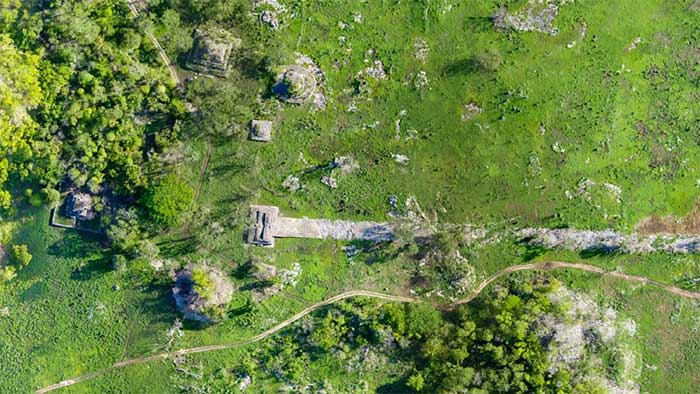
Remnants of the “White Road”. (Photo: University of Miami).
Constructed around 700 AD, the sacbe (White Road) is named after a layer of plaster made from limestone that paved the road. The properties of this stone reflect surrounding light, making the road visible both day and night.
Archaeologists refer to the white road as a technical masterpiece, comparable to the Maya pyramids. Laid on uneven ground, it required the clearing of pebbles and vegetation, and it is covered by a layer of white plaster made with a formula similar to Roman concrete.
The Burial Road
Approximately 4,500 years ago, Bedouins traveled along roads lined with burial sites. These graves were carved into the rock, often built in a circular shape or resembling pendants. They featured symbols that indicated directions to the nearest road, roadside markers, or clear pathways to the next water source. The closer to the water, the more concentrated the graves would be. This allowed travelers to journey about 530 kilometers without the fear of dying of thirst.
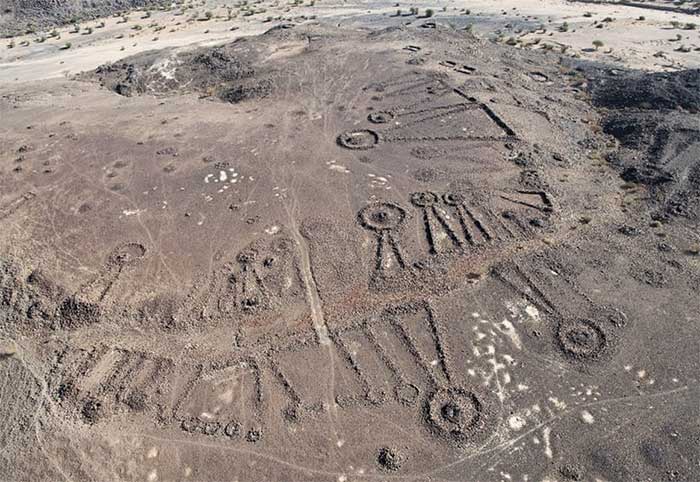
The 4,500-year-old ancient road network in Arabia, dotted with ancient graves resembling pendants. (Photo: CNN)
In what is now Saudi Arabia, archaeologists discovered an impressive network of long roads marked by human graves, connecting one oasis to another in 2022.
Archaeologist Matthew Dalton from Western University stated: “The funeral avenue was the main long road at that time. This indicates that the inhabitants of the Arabian Peninsula 4,500 years ago had more economic and social connections than we thought.“
The Jordan Trail Mentioned in the Bible
In Jordan, there is a winding road that cuts through mountains and valleys. It is known as the King’s Highway. This road was mentioned in the Bible when Moses requested permission from the King of Edom to use this route to pass through his land. As a result, travel and trade activities frequently occurred along this road since the 8th century BC.
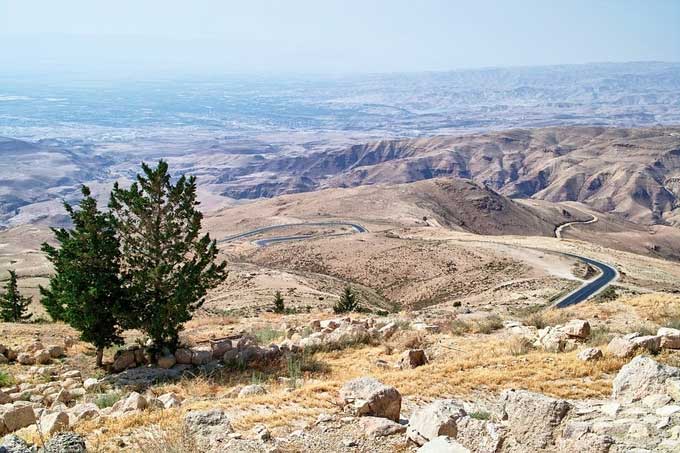
Mount Nebo in Jordan, rising 820 meters. (Photo: Shutterstock).
Historically, the Jordan Trail served as an important bridge connecting various kingdoms. For thousands of years, pilgrims, trade caravans, soldiers, and kings traversed this road to travel from north to south through the Jordan highlands.
Today, the ancient road has been modernized, with dedicated lanes for different types of vehicles. Tourists can travel along the 250-kilometer route and admire a variety of historical sites along the way. Notable sites include Roman ruins, Crusader castles, the ancient city of Petra, Byzantine churches, Umayyad palaces, ancient towns, and the UNESCO World Heritage site of Umm ar-Rasas.
The Legendary Silk Road
Many remain skeptical about the existence of the Silk Road, despite historical texts containing abundant information about this legendary trade route. According to historians, this route connected China to the world. Similar to a blood vessel, the network extended 6,437 kilometers, enabling the Chinese to sell their finest silk and other valuable goods.
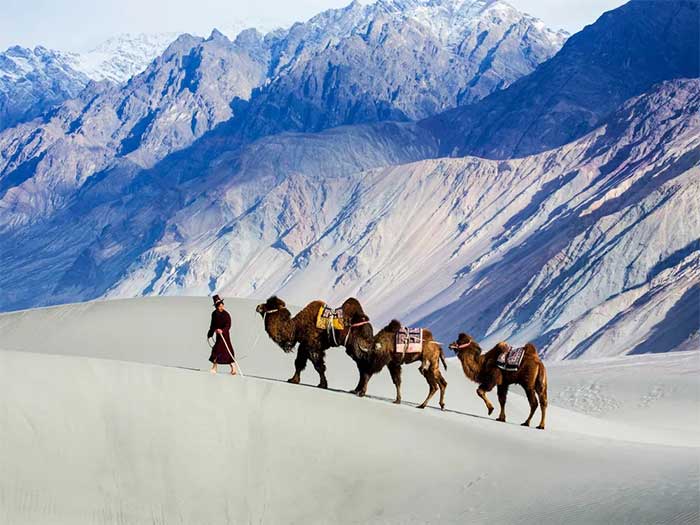
The Silk Road was once a legendary trade route. (Photo: Hugh Sitton/Corbis).
However, the truth is that China did not export silk during this period and was not engaged in foreign trade. They didn’t even refer to it as the Silk Road. Instead, the term was coined by a German geographer in the 1870s.
Trade along the Silk Road gradually developed, leading to rampant banditry along the route. Additionally, the harsh terrain and lack of drinking water posed a nightmare for traders. Many who traversed the Lop Nur salt desert perished due to insufficient drinking water.
Given the difficult travel conditions, high transportation costs, and numerous risks, the Silk Road is now largely unused.








































